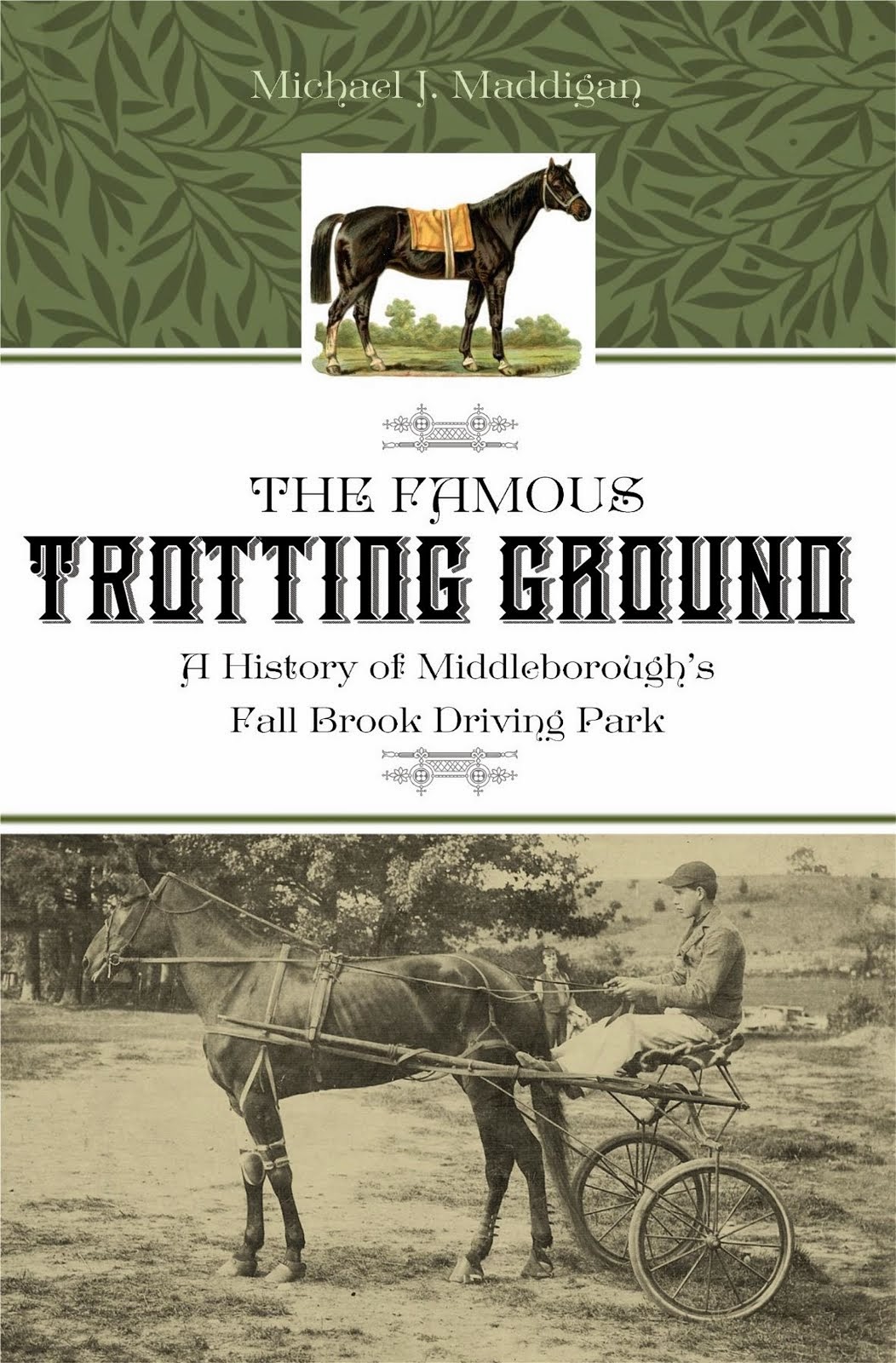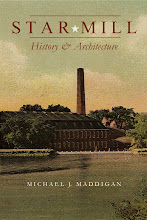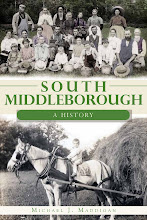
 In 1919, James Raymond Simmons authored The Historic Trees of Massachusetts. Included among the trees documented by Simmons were Betsey and William:
In 1919, James Raymond Simmons authored The Historic Trees of Massachusetts. Included among the trees documented by Simmons were Betsey and William:In a broad field near Middleboro, on the road to New Bedford, there are standing at the present time two beautiful and towering "wine glass" elms. As you approach them from the north they give the impression of being so close together that the tips of the branches interlock; but upon entering the field by way of the cart road leading in from the main highway they break upon the view as two separate columns, seventy-five feet apart, lifting their heads upward into the sky. Each is slender and graceful, not possessed of great age, but singularly beautiful in its isolation from everything save field and sky and distant woods.
They are considered historic in that they stand in the middle of what was once a training-field, where the soldiers of this community were mustered for service in the Civil War. The men who enlisted from Middleboro and its environs served their country with honor and distinction, notably among the first battles of the war. The towering elms, ever a fitting memorial to the brave, stand here as if rapt in silent reflection, garlanded almost to the ground with green leaves, overlooking the place where some of the boys in blue prepared themselves for the great crisis. The larger tree of the two has a height of 60 feet, a spread of 65 feet and a circumference, at breast height, of 8 feet. The smaller tree is 60 feet in height, 50 feet in spread and 7 feet in circumference.
 Apparently unknown to Simmons were the two names by which the trees were known. According to Gladys Vigers in her History of the Town of Lakeville, Massachusetts (1953), the trees were planted by Peter Smith and later named for William and Betsey (Vaughan) Harlow who came to occupy the Smith Farm. Betsey's brother, Peter Vaughan, resided on Vaughan Street and was deeply attached to his sister. "...After she moved away from the homestead, he grew very lonesome. He would console himself by looking toward his sister's new home. He could see the elms above all the trees in the woods. These trees seemed the nearest he could get to his sister, so when he was looking that way, he would remark, 'There are Betsey and William.'" [Vigers, pp. 102, 103]
Apparently unknown to Simmons were the two names by which the trees were known. According to Gladys Vigers in her History of the Town of Lakeville, Massachusetts (1953), the trees were planted by Peter Smith and later named for William and Betsey (Vaughan) Harlow who came to occupy the Smith Farm. Betsey's brother, Peter Vaughan, resided on Vaughan Street and was deeply attached to his sister. "...After she moved away from the homestead, he grew very lonesome. He would console himself by looking toward his sister's new home. He could see the elms above all the trees in the woods. These trees seemed the nearest he could get to his sister, so when he was looking that way, he would remark, 'There are Betsey and William.'" [Vigers, pp. 102, 103]Illustrations:
Sources:





















+of+Smoky+Mountains+018.jpg)
0 comments:
Post a Comment